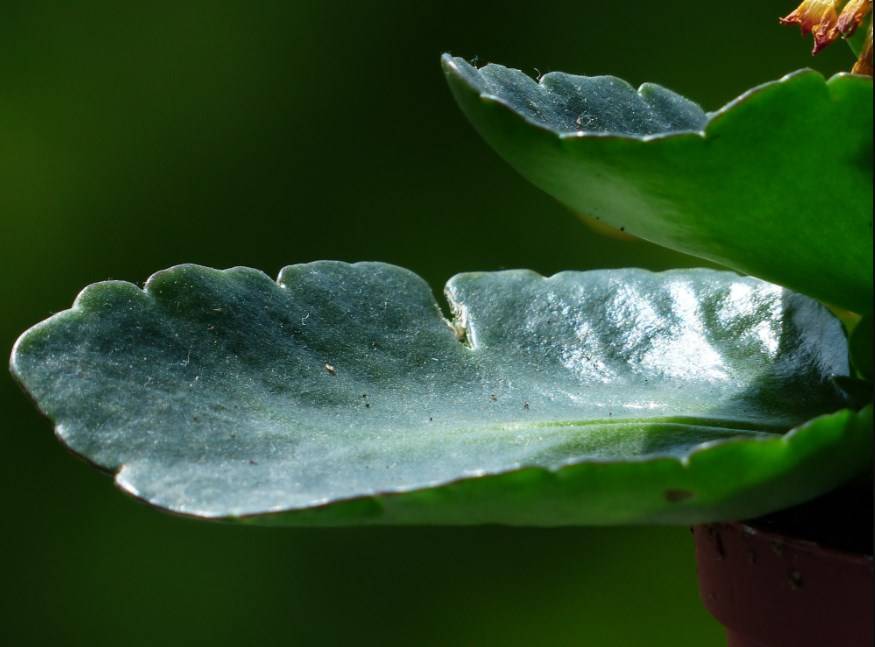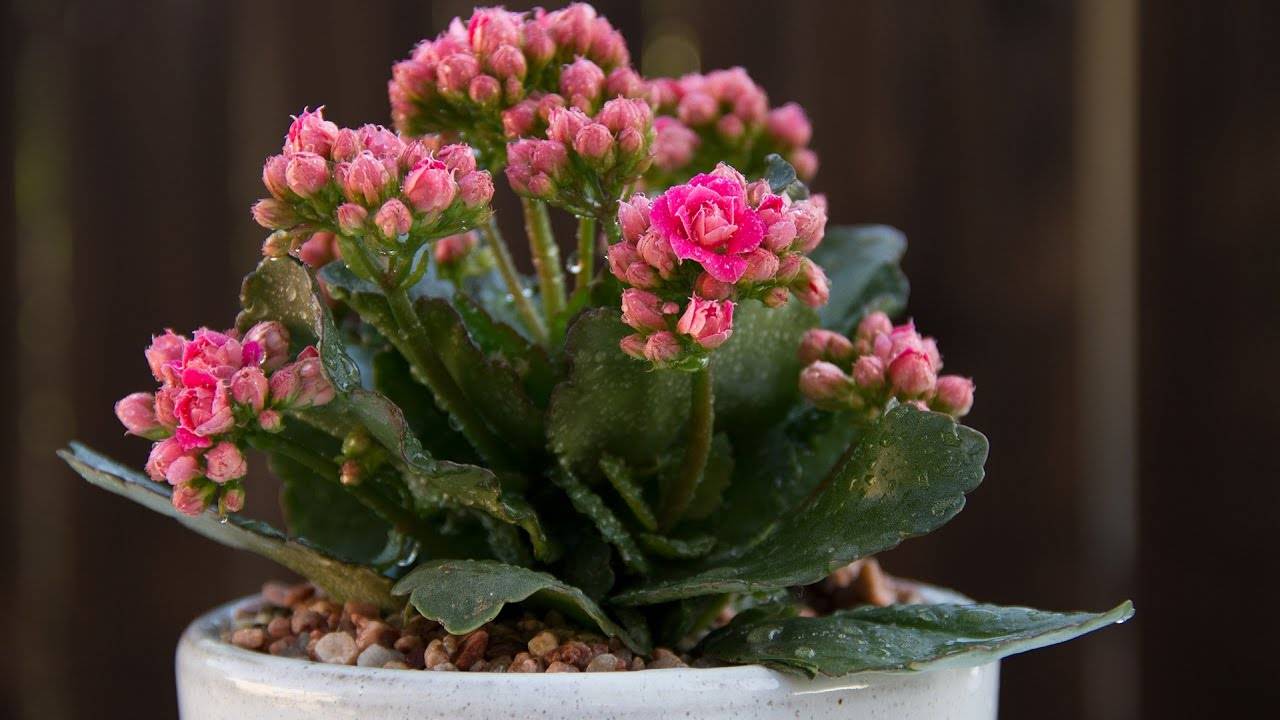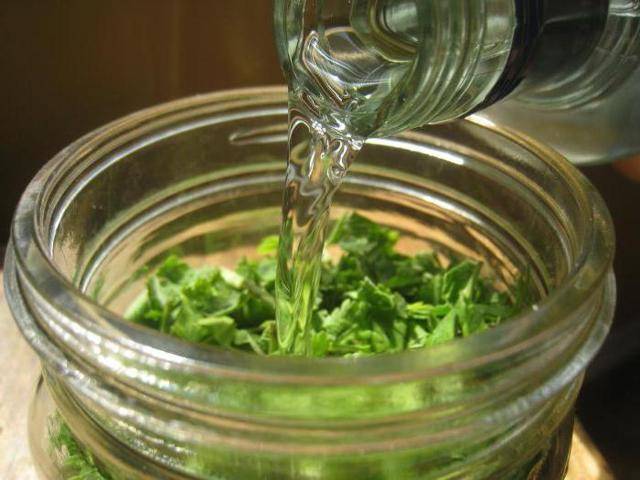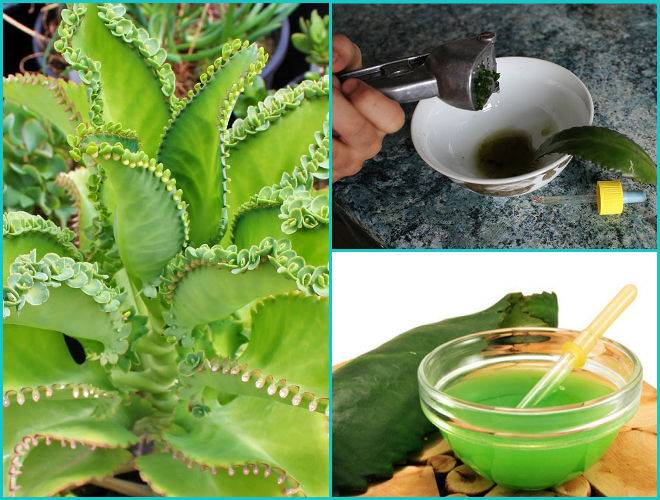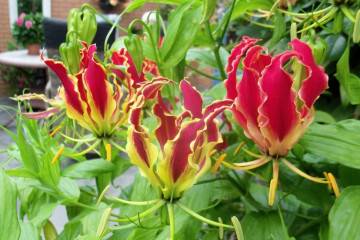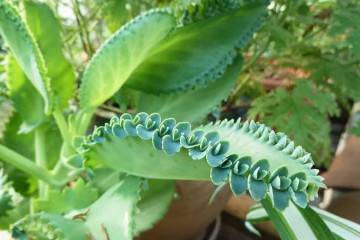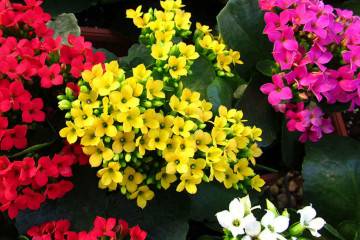Kalanchoe medicinal: the main types and options how to use
Content:
Kalanchoe medicinal is a storehouse of vitamins, minerals, macro- and microelements that can not only strengthen the human body, but help it recover. In addition to this, the plant has attractive decorative properties and fits well into the interior of rooms. The genus Kalanchoe has more than two hundred varieties, and, unfortunately, not all of them are medicinal. In a useful plant, the stems and foliage are painted in a dark green color, the structure is fleshy and juicy.
What does the medicinal Kalanchoe look like?
Kalanchoe has a large number of other names. The most common: tree of life, tree-like Kalanchoe. Ornamental culture belongs to the group of succulents.
The healing Kalanchoe can be recognized by the following features:
- The height of an adult plant mostly does not exceed 50-60 cm.
- The stem is quite thick, its color is rich green.
- The leaves are fleshy and soft, there are jags on the sides, and barely noticeable streaks of a reddish hue.
The plant propagates by separating the formed buds, which independently penetrate into the soil and form the root system.
Common types
Kalanchoe is a medicinal plant that, depending on the variety, has different characteristics. At home, the following types of Kalanchoe are most often used for treatment.
Degremona
The height of an adult plant is capable of reaching a height of 100 cm. The leaves are triangular in shape, light-loving.
Blossfeld
This Kalanchoe doctor blooms, resulting in the formation of flowers of an unusual shape on the plant. This variety is considered to be more decorative. The length of the stem reaches 30 cm. The leaves are rounded, the inflorescences are collected in a bunch. Prefers to grow in a shady place.
The healing properties of the flower
Kalanchoe leaves contain a high concentration of flavonoids, which have a very beneficial effect on the tone of the heart muscle. In addition, the flower contains various enzymes and organic acids. Also, flowers, stems and foliage contain aluminum, copper, manganese (potassium permanganate), calcium and iron. The composition is truly unique and has incredible beneficial properties.
The sap of an ornamental plant has a pronounced antibacterial effect. The range of applications is practically unlimited: ophthalmology, gynecology, general surgery and other fields.
It is one of the few ornamental plants that effectively purifies indoor air, destroying various groups of harmful microorganisms, influenza viruses and microbes.With the help of Kalanchoe juice, it is possible to quickly recover from colds and colds, it is also a powerful remedy for inflammation.
Another significant advantage of culture is the ability to give vigor and positive energy. This phenomenon has already been scientifically proven, immunomodulatory and anti-allergic properties have also been proven.
How to be treated for adults
What is Kalanchoe used for in folk medicine? The use is due to the high concentration of nutrients in the composition, which help to recover faster and, for example, get rid of a cold. In terms of chemical composition and decorative qualities, the plant has much in common with aloe, only Kalanchoe fights viral diseases more effectively. The disease can be overcome much faster.
On the basis of Kalanchoe, a well-known medical product was developed and manufactured, which was named Kalanchin. It is used to treat frostbite, oeogs, and nipple cracks in women during lactation.
What does Kalanchoe treat from?
Quite a common question of people who are fond of naturotherapy: what treats Kalanchoe. Experts have compiled a short list of diseases during which the plant helps to alleviate the condition:
- diseases of the digestive system;
- rhinitis;
- internal and external bleeding;
- colds;
- the juice of the culture has restorative and regenerating properties, thanks to which the healing of burns and wounds is accelerated;
- inflammation of the mucous membranes of the sinuses and nose.
Contraindications for use
Any product of 100% plant origin can cause a person to develop an allergic reaction, Kalanchoe is no exception.
The main contraindications for use:
- pregnancy;
- diabetes;
- allergic reactions;
- rheumatism;
- low blood pressure;
- hepatic pathology;
- oncological diseases.
Also, with extreme caution, the compositions should be taken by people suffering from cardiovascular diseases.
Folk recipes
In order for the plant to have the maximum healing effect on the human body, you need to know how to use the Kalanchoe correctly. An improperly prepared tincture, ointment or any other composition is no longer healing.
For the preparation of medicinal tinctures, it is best to use leaves that are as close to the stem as possible.
Tincture
This is the first and most common remedy. For cooking, you need to grind the previously prepared leaves, pour them with alcohol or vodka. Place the container with the contents in a dark place and incubate for 14 days. After that, the tincture must be stored strictly in the refrigerator.
The product can be used to rinse the mouth, use it for inflammation, brittle nails and varicose veins.
Fresh Juice
Juice is the easiest to get. It is usually used for ENT diseases in the early stages of development. As a rule, a few drops are applied 5 times during the day. In a similar way, the composition can be applied to wounds, warts and papillomas, fixing the tampon on the problem area.
Ointment
For cooking, mix fresh juice with fat or petroleum jelly. All components must be thoroughly mixed, and then hold the composition in a water bath for half an hour.
It is an effective remedy for reducing swelling, inflammation and wound healing, and it is also used for cosmetic purposes. It has an extremely beneficial effect in the treatment of skin diseases, does not cause itching and burning.
Admission procedure
Homemade drug regimens:
- Treatment with juice of stomach ulcers. To do this, within 1 month, you need to take concentrated juice three times a day, 1 tsp.
- With mastitis, applications are applied several times a day.
- The mucous membrane of the nose with influenza is lubricated with juice three times a day.
- For gum disease and inflammation of the oral cavity, the medicinal composition is caressed.
- For pain in the ears, the juice is instilled into the auricles 1-2 drops 3-4 times during the day.
The plant sap is also actively used for mental and physical fatigue, warts, psoriasis, tuberculosis and kidney inflammation.
The use of the plant for cosmetic purposes
First, you should remove the skin from the leaves and rub the skin of the face with it a little so that the medicinal composition is absorbed. After cleaning, be sure to apply a nourishing cream. Already after the first two weeks of regular use, a pronounced tonic effect will be noticeable. The skin will become more toned and youthful.
Flower care at home
Home care for the medicinal Kalanchoe is standard, and does not have any special recommendations. Due to the fact that the plant belongs to the category of succulents, it is hardy and unpretentious. However, if you do not even fulfill the required minimum, the once fresh foliage will begin to curl, dry, turn yellow and fall off.
To prevent this, you need to follow the basic rules for care:
- The plant needs good lighting. Bright light should be maintained from early morning until about two in the afternoon.
- The optimal temperature regime for proper growth and development of culture is 17-19 degrees. But if the temperature drops to 5 degrees, this should not adversely affect the condition of the plant. It is important to avoid high temperatures, since the flower actively begins to absorb moisture, which provokes the development of decay.
- Moisture in excess is extremely detrimental. When watering, do not allow moisture to get on the stems and foliage, this can cause rotting. Watering should be moderate.
The plant reproduces vegetatively. To do this, in May-June, you need to cut off the tops of the shoots and transplant them into a mixture of soil, clay and sand.
The ornamental Kalanchoe medicinal plant is not only a useful, but also an attractive flower. It can be used to treat and prevent a large number of diseases. The plant is easy to care for, which is an added advantage of growing it.

